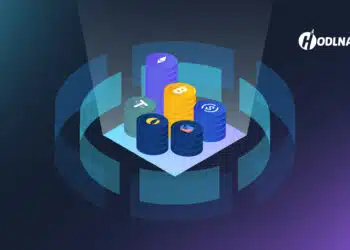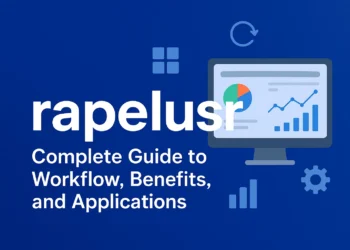Have you ever been digging through your Android device’s logs or debugging a WebView issue and stumbled upon the enigmatic string content://cz.mobilesoft.appblock.fileprovider/cache/blank.html? You’re not alone. This cryptic identifier is a hallmark of sophisticated Android design, appearing in systems worldwide yet remaining a mystery to many users and even budding developers.
This URI is not a glitch or an error; it’s a secure gateway. Specifically, it points to a cached HTML file within the popular AppBlock application, a powerful tool for boosting productivity and managing screen time. Understanding content://cz.mobilesoft.appblock.fileprovider/cache/blank.html offers a masterclass in Android’s core principles of secure data sharing, efficient resource management, and enhanced user experience.
Whether you’re an Android developer looking to master ContentProvider patterns, a security enthusiast curious about how apps protect their data, or an AppBlock user wondering what happens under the hood, this deep dive will demystify this URI and its critical role in the Android ecosystem.
Understanding Android’s Content URI Framework
Before we can decode content://cz.mobilesoft.appblock.fileprovider/cache/blank.html, we must understand the “content://” scheme itself. This is the bedrock of secure inter-app communication on Android, moving beyond the risky practice of sharing direct file paths.
Deconstructing the content://cz.mobilesoft.appblock.fileprovider/cache/blank.html URI
Let’s break this URI down into its core components:
- Scheme:
content://– This identifies the URI as one that should be handled by Android’s content resolution system, not the filesystem. - Authority:
cz.mobilesoft.appblock.fileprovider– This is the unique identifier for AppBlock’s specific FileProvider component. It ensures the request is routed to the correct app. - Path:
/cache/– This specifies that the target resource is located within the application’s designated cache directory. - Resource:
blank.html– This is the specific file being requested—a simple, blank HTML page.
The Security Paradigm: Why File Paths Are No Longer Enough
The shift from file paths to Content URIs was a monumental leap for Android security. Here’s why content://cz.mobilesoft.appblock.fileprovider/cache/blank.html is so powerful:
| Security Feature | Traditional File Path | Content URI (e.g., content://cz.mobilesoft...) |
|---|---|---|
| Access Control | Limited OS-level permissions | Granular, app-specific permissions |
| Exposure | Reveals full system path | Abstracts the actual file location |
| Sharing | Risky; grants broad access | Targeted, temporary permission grants |
| Security | Prone to traversal attacks | Controlled and sanitized access |
AppBlock’s Architecture: The Role of the FileProvider
What is AppBlock and Why Does It Need a blank.html?
AppBlock, developed by MobileSoft s.r.o., is a premier productivity application that helps users reclaim their focus by blocking distracting apps and websites.
The blank.html file, accessed via content://cz.mobilesoft.appblock.fileprovider/cache/blank.html, is a key piece of its operational design. It serves multiple purposes:
- User Experience (UX): When AppBlock restricts access to an app or website, it can display this blank page instead of a confusing error or crash screen. This provides a clean, non-jarring experience.
- Performance: Loading a lightweight, locally cached HTML file is incredibly fast and efficient, ensuring the blocking mechanism is seamless.
- Reliability: It works offline. Since the file is cached on the device, AppBlock doesn’t rely on a network connection to function correctly.
Under the Hood: Technical Implementation
Configuring the FileProvider in AndroidManifest.xml
For content://cz.mobilesoft.appblock.fileprovider/cache/blank.html to work, AppBlock declares its FileProvider in its AndroidManifest.xml. This configuration is what tells the Android OS that the app can serve files.
xml
<provider
android:name="androidx.core.content.FileProvider"
android:authorities="cz.mobilesoft.appblock.fileprovider"
android:exported="false"
android:grantUriPermissions="true">
<meta-data
android:name="android.support.FILE_PROVIDER_PATHS"
android:resource="@xml/file_paths" />
</provider>
Programmatic Access: Using ContentResolver to Fetch the Resource
Other components within the AppBlock app itself access this resource using Android’s ContentResolver, which mediates the request to the FileProvider.
java
// Parse the URI string into a Uri object
Uri blankPageUri = Uri.parse("content://cz.mobilesoft.appblock.fileprovider/cache/blank.html");
try {
// Use the ContentResolver to open a stream to the content
InputStream inputStream = getContentResolver().openInputStream(blankPageUri);
// Read the stream (e.g., to load into a WebView)
// ... processing code ...
inputStream.close();
} catch (IOException e) {
Log.e("APP_BLOCK", "Error accessing the cached blank.html file", e);
}
Where Will You See This URI? Common Encounter Scenarios
During App Blocking Sessions
This is the primary scenario. When you try to open a blocked app, AppBlock’s activity takes over, and it may use a WebView to load content://cz.mobilesoft.appblock.fileprovider/cache/blank.html as a placeholder.
In Debug Logs and Stack Traces
Developers and advanced users might see this URI in logcat outputs. This occurs during:
- WebView initialization and loading sequences.
- FileProvider operations related to caching.
- General debugging of AppBlock’s internal processes.
WebView and Offline Content Loading
This pattern is common for apps that need to display offline content. The WebView is instructed to load a local resource via a content URI, ensuring a smooth experience regardless of network conditions.
Security First: Best Practices and Considerations
The implementation of content://cz.mobilesoft.appblock.fileprovider/cache/blank.html exemplifies excellent security practice:
- Minimal Exposure: The FileProvider is configured with
android:exported="false", meaning only the AppBlock app itself (or apps it explicitly grants permission to) can access this URI. - Temporary Permissions: If AppBlock did need to share this with another app (e.g., a browser), it could grant temporary, revocable permissions, minimizing risk.
- Contained Paths: The XML file defining the paths (e.g.,
file_paths.xml) strictly limits which directories can be shared, preventing directory traversal attacks.
Troubleshooting Common FileProvider Issues
If you’re a developer and see errors related to this URI, common causes include:
- Permission Denial: The most common issue. The context trying to access the URI does not have the required permissions.
- File Not Found: The
blank.htmlfile might have been cleared from the cache by the system or a cleanup utility. - Misconfigured Authority: A development error where the authority string in the code doesn’t match the one declared in the manifest.
Beyond AppBlock: Advanced Integration Patterns
The pattern demonstrated by content://cz.mobilesoft.appblock.fileprovider/cache/blank.html is a blueprint for modern Android development. Developers can use this same structure to:
- Implement secure in-app file sharing (e.g., sharing a generated report to an email app).
- Create offline-first Progressive Web Apps (PWAs) within a native shell.
- Build plugin architectures where different components safely share resources.
Conclusion: Mastering Secure Content Sharing
The URI content://cz.mobilesoft.appblock.fileprovider/cache/blank.html is far more than a string of text. It is a testament to Android’s sophisticated security model and a case study in how top-tier applications like AppBlock leverage system APIs to create powerful, secure, and user-friendly experiences. By understanding its components and purpose, you gain insight into the foundational patterns that make modern Android development both challenging and powerful.
Frequently Asked Questions (FAQs)
Is content://cz.mobilesoft.appblock.fileprovider/cache/blank.html a virus or malware?
No. This is a legitimate and secure URI used by the official AppBlock application for its core functionality. It is not malicious.
Can I open this URI in my web browser?
Probably not. Most web browsers do not have the necessary permissions to access AppBlock’s private FileProvider. Attempting to do so will likely result in a permission error or a “content not found” message.
Why does this URI appear on my device?
It appears in system logs when AppBlock is active, particularly when it is blocking access to another application or website. This is normal behavior.
As a developer, how can I implement a similar system?
You can implement this by:
- Adding the
FileProviderdeclaration to yourAndroidManifest.xml. - Creating an XML file defining the paths you wish to share (e.g.,
res/xml/file_paths.xml). - Using
FileProvider.getUriForFile()to generate a content URI for a file. - Granting temporary permissions to other apps if needed with
Context.grantUriPermission().










